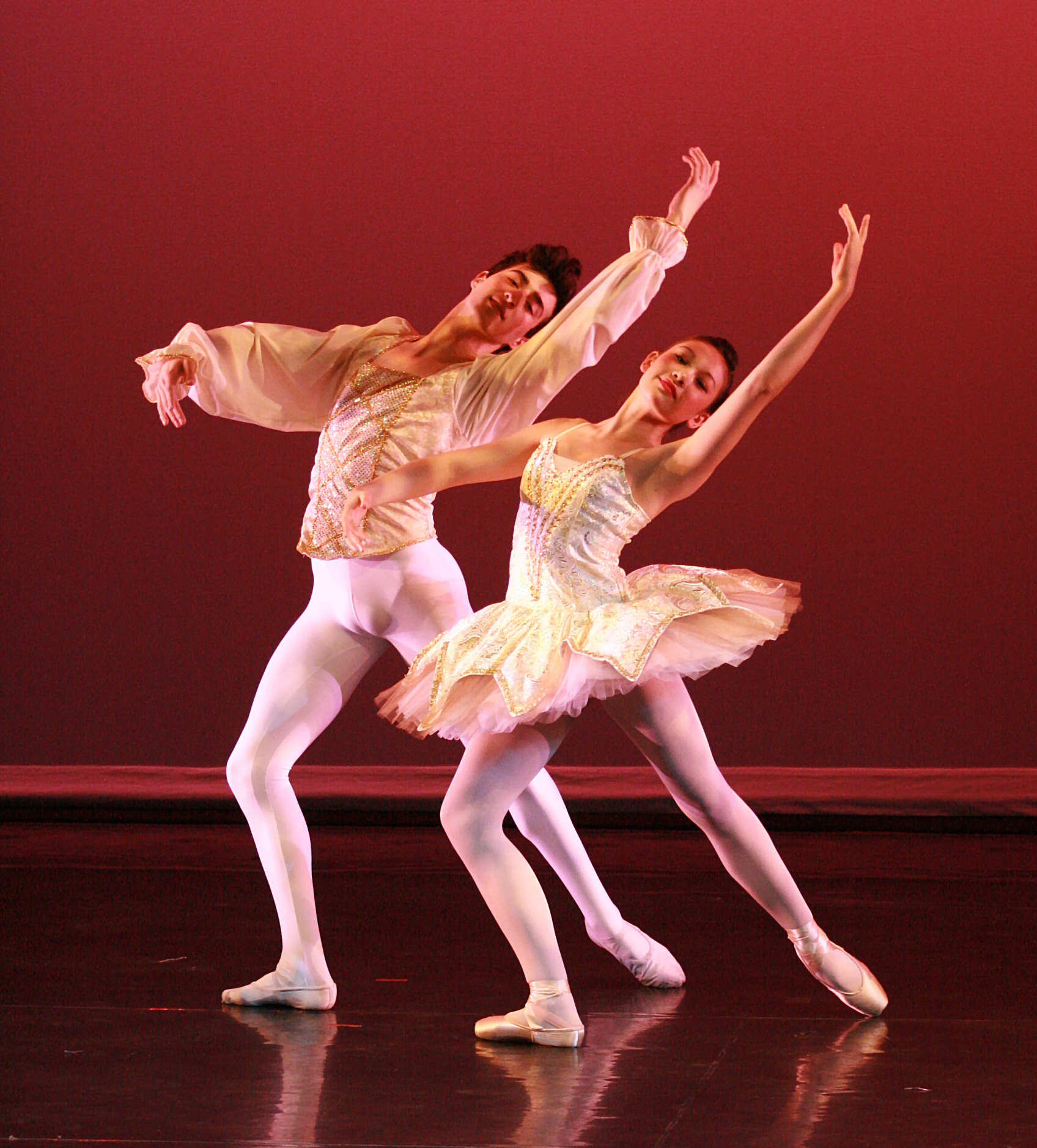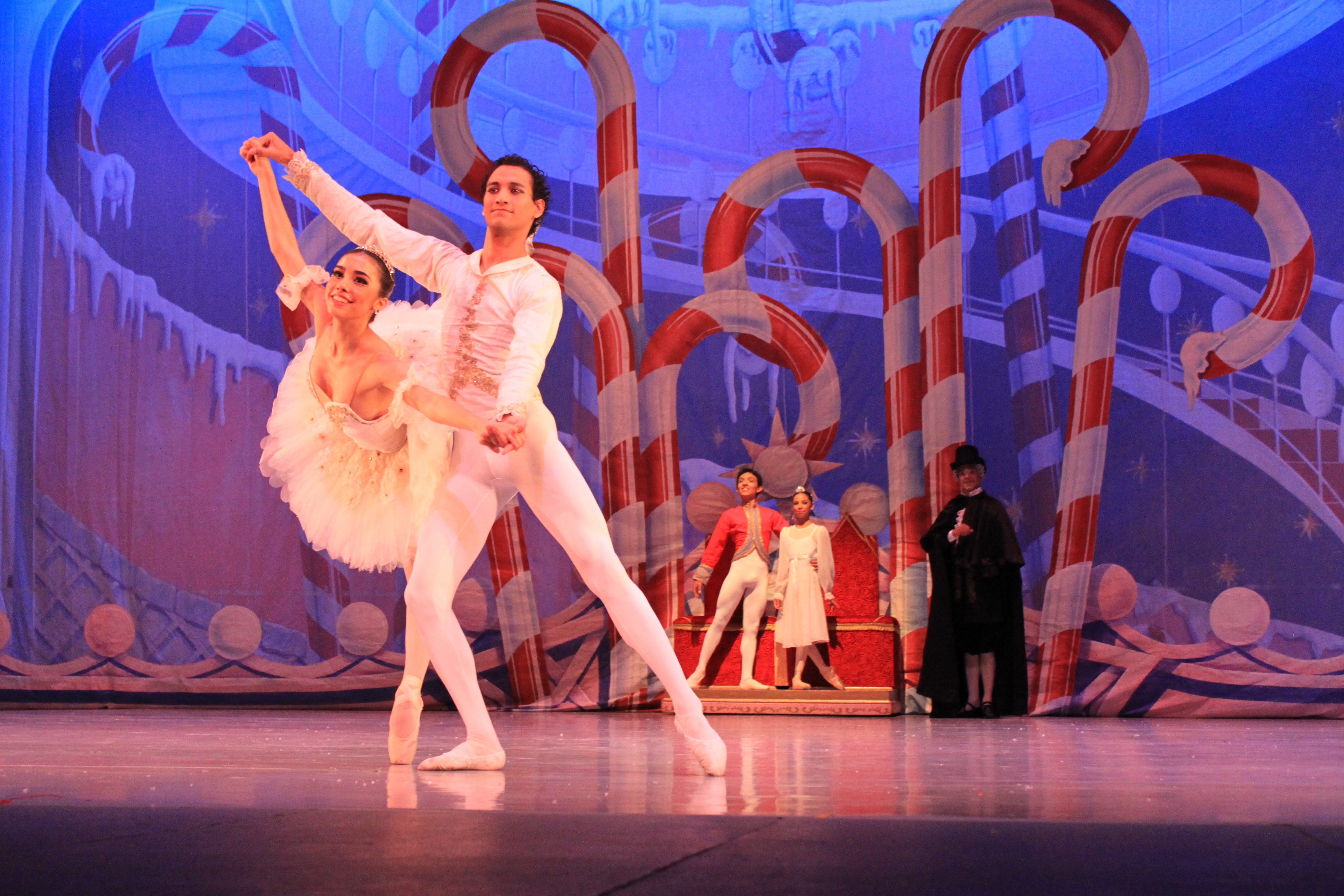Grand pas de deux on:
[Wikipedia]
[Google]
[Amazon]
 In
In
 A grand pas de deux is a structured pas de deux that typically has five parts, consisting of an ''entrée'' (introduction), an ''adagio'', two variations (a solo for each dancer), and a ''coda'' (conclusion). It is effectively a suite of dances that share a common theme, often symbolic of a love story or the partnership inherent in love, with the dancers portraying expressions of affectionate feelings and thoughts between romantic partners. It is often considered to be the
A grand pas de deux is a structured pas de deux that typically has five parts, consisting of an ''entrée'' (introduction), an ''adagio'', two variations (a solo for each dancer), and a ''coda'' (conclusion). It is effectively a suite of dances that share a common theme, often symbolic of a love story or the partnership inherent in love, with the dancers portraying expressions of affectionate feelings and thoughts between romantic partners. It is often considered to be the
 In
In ballet
Ballet () is a type of performance dance that originated during the Italian Renaissance in the fifteenth century and later developed into a concert dance form in France and Russia. It has since become a widespread and highly technical form of ...
, a pas de deux ( French, literally "step of two") is a dance duet in which two dancers, typically a male and a female, perform ballet steps together. The pas de deux is characteristic of classical ballet
Classical ballet is any of the traditional, formal styles of ballet that exclusively employ classical ballet technique. It is known for its aesthetics and rigorous technique (such as pointe work, turnout of the legs, and high extensions), it ...
and can be found in many well-known ballets, including ''Sleeping Beauty
''Sleeping Beauty'' (french: La belle au bois dormant, or ''The Beauty in the Sleeping Forest''; german: Dornröschen, or ''Little Briar Rose''), also titled in English as ''The Sleeping Beauty in the Woods'', is a fairy tale about a princess cu ...
'', '' Swan Lake'', and '' Giselle''. It is most often performed by a male and a female (a ''danseur'' and a ''ballerina'') though there are exceptions, such as in the film ''White Nights
White night, White Night, or White Nights may refer to:
* White night (astronomy), a night in which it never gets completely dark, at high latitudes outside the Arctic and Antarctic Circles
* White Night festivals, all-night arts festivals held ...
'', in which a pas de deux is performed by Mikhail Baryshnikov and Gregory Hines
Gregory Oliver Hines (February 14, 1946 – August 9, 2003) was an American dancer, actor, choreographer, and singer. He is one of the most celebrated tap dancers of all time. As an actor, he is best known for '' Wolfen'' (1981), '' The Cotton C ...
.
Grand pas de deux
 A grand pas de deux is a structured pas de deux that typically has five parts, consisting of an ''entrée'' (introduction), an ''adagio'', two variations (a solo for each dancer), and a ''coda'' (conclusion). It is effectively a suite of dances that share a common theme, often symbolic of a love story or the partnership inherent in love, with the dancers portraying expressions of affectionate feelings and thoughts between romantic partners. It is often considered to be the
A grand pas de deux is a structured pas de deux that typically has five parts, consisting of an ''entrée'' (introduction), an ''adagio'', two variations (a solo for each dancer), and a ''coda'' (conclusion). It is effectively a suite of dances that share a common theme, often symbolic of a love story or the partnership inherent in love, with the dancers portraying expressions of affectionate feelings and thoughts between romantic partners. It is often considered to be the pièce de résistance
{{Short pages monitor